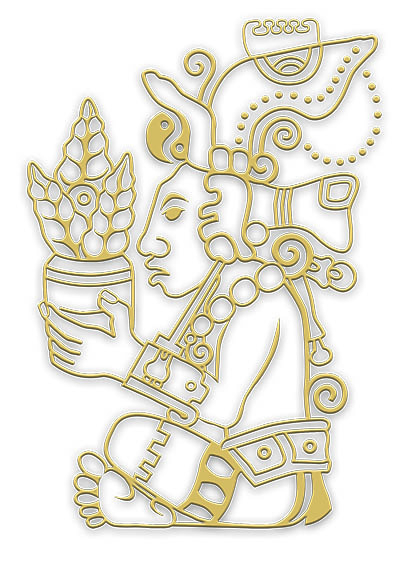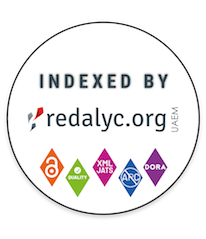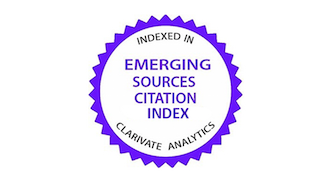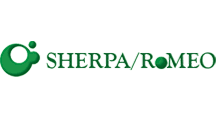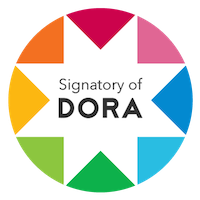Antibiosis of proteins and metabolites of three species of Trichoderma against paraguayan isolates of Macrophomina phaseolina
DOI:
https://doi.org/10.15517/am.v30i1.34423Keywords:
antagonism, biological control, charcoal rot, mycotoxins, pathogenic fungiAbstract
Introduction. Macrophomina phaseolina is a necrotrophic fungus that is difficult to control. Biocontrol agents, like the species of the genus Trichoderma, are an alternative for the management of crop diseases caused by this plant-pathogen. Objective. The objective of the present work was to determine the antibiosis capacity of Trichoderma arundinaceum, T. brevicompactum and T. harzianum, against two isolates of M. phaseolina. Materials and methods. Experiments were carried out from October 2015 to March 2016. Three reference strains of Trichoderma were used: T. arundinaceum (IBT40837), T. brevicompactum (IBT40841) and T. harzianum T34 (CECT2413); and two isolates of M. phaseolina (FCQ6 and FCQ9). Direct confrontation and antibiosis assays were performed, and profiling of proteins and metabolites secreted from Trichoderma. Results.The Trichoderma species significantly inhibited the growth of both M. phaseolina isolates in the direct confrontation assay, cellophane and/or dialysis membrane. In the direct confrontation trial, the greatest inhibition of fungal growth was observed at 96 h. M. phaseolina isolated from sesame (Sesamum indicum L. cultivar Escoba blanca) allowed the evaluation of the antifungal activity of the molecules of high and low molecular weight even up to 120 h. T. arundinaceum maintained 100% growth inhibition in both cellophane and dialysis membrane indicating that low molecular weight metabolites were enough for complete growth inhibition of this M. phaseolina isolate. In contrast, T. brevicompactum and T. harzianum demonstrated the importance of high molecular weight molecules for the maintenance of antifungal activity. In addition, the complexity of secondary metabolites and proteins secreted by the three Trichoderma species was demonstrated. Conclusion. This work is the first description of the antifungal activity of T. arundinaceum and T. brevicompactum against M. phaseolina and also highlights the potential of fungi isolated from native soil as a biological alternative for the control of plant-pathogenic fungi of agricultural importance.
Downloads
References
Ahluwalia, V., J. Kumar, V.S. Rana, O.P. Sati, and S. Walia. 2015. Comparative evaluation of two Trichoderma harzianum strains for major secondary metabolite production and antifungal activity. Nat. Prod. Res. 29:914-920. doi:10.1080/14786419.2014.958739
Arias, R.S., J.D. Ray, A. Mengistu, and B.E. Scheffler. 2011. Discriminating microsatellites from Macrophomina phaseolina and their potential association to biological functions. Plant Pathol. 60:709-718. doi:10.1111/j.1365-3059.2010.02421.x
Ayoubi, N., D. Zafari, and M. Mirabolfathy. 2014. Evaluation of β-1,3-glucanase and β-1,4-glucanase enzymes production in some Trichoderma species. Arch. Phytopathol. Plant Prot. 47:1929-1941. doi:10.1080/03235408.2013.862457
Baird, R.E., P.A. Wadl, T. Allen, D. McNeill, X. Wang, J.K. Moulton, T.A. Rinehart, H.K. Abbas, T. Shier, and R.N. Trigiano. 2010. Variability of United States isolates of Macrophomina phaseolina based on simple sequence repeats and cross genus transferability to related genera within Botryosphaeriaceae. Mycopathologia 170(3):169-180. doi:10.1007/s11046-010-9308-3
Beever, R., and E.G. Bollard. 1970. The nature of the stimulation of fungal growth by potato extract. J. Gen. Microbiol. 60:273-279. doi:10.1099/00221287-60-2-273
Bradford, M.M. 1976. A rapid and sensitive method for the quantitation of microgram quantities of protein utilizing the principle of protein-dye binding. Anal. Biochem. 72:248-254. doi:10.1016/0003-2697(76)90527-3
Chaverri, P., and G.J. Samuels. 2003. Hypocrea/Trichoderma (Ascomycota, Hypocreales, Hypocreaceae): Species with green ascospores. Stud. Mycol. 48:1-119.
Corley, D., M. Miller-Wideman, and R. Durley. 1994. Isolation and structure of harzianum A: a new trichothecene from Trichoderma harzianum. J. Nat. Prod. 156:422-425. doi:10.1021/np50105a019
Degenkolb, T., A. Berg, W. Gams, B. Schlegel, and U. Gräfe. 2003. The occurrence of peptaibols and structurally related peptaibiotics in fungi and their mass spectrometric identification via diagnostic fragment ions. J. Pept. Sci. 9:666-678. doi:10.1002/psc.497
Gómez-Mendoza, D.P., M. Junqueira, L.H.F. Do Vale, G.B. Domont, E.X. Ferreira Filho, M.V. De-Sousa, and C.A.O. Ricart. 2014. Secretomic survey of Trichoderma harzianum grown on plant biomass substrates. J. Proteome Res. 13:1810-1822. doi:10.1021/pr400971e
Guigón-López, C., V. Guerrero-Prieto, F. Vargas-Albores, E. Carvajal-Millán, G.D. Ávila-Quezada, L. Bravo-Luna, M. Ruocco, S. Lanzuise, S. Woo, y M. Lorito. 2010. Identificación molecular de cepas nativas de Trichoderma spp. su tasa de crecimiento in vitro y antagonismo contra hongos fitopatógenos. Rev. Mex. Fitopatol. 28(2):87-96.
Harman, G.E. 2006. Overview of mechanisms and uses of Trichoderma spp. Phytopathology 96:190-194. doi:10.1094/PHYTO-96-0190
Infante, D., B. Martínez, N. González, y Y. Reyes. 2009. Mecanismos de acción de Trichoderma frente a hongos fitopatógenos. Rev. Protección Veg. 24(1):14-21.
Khalili, E., M.A. Javed, F. Huyop, S. Rayatpanah, S. Jamshidi, and R.A. Wahab. 2016. Evaluation of Trichoderma isolates as potential biological control agent against soybean charcoal rot disease caused by Macrophomina phaseolina. Biotechnol. Biotechnol. Equip. 30:479-488. doi:10.1080/13102818.2016.1147334
Khan, A.N., F. Shair, K. Malik, Z. Hayat, M.A. Khan, F.Y. Hafeez, and M.N. Hassan. 2017. Molecular identification and genetic characterization of Macrophomina phaseolina strains causing pathogenicity on sunflower and chickpea. Front. Microbiol. 8:1309. doi:10.3389/fmicb.2017.01309.
Kubicek, C.P., M. Komon-Zelazowska, and I.S. Druzhinina. 2008. Fungal genus Hypocrea/Trichoderma: from barcodes to biodiversity. J. Zhejiang Univ. Sci. B 9:753-763. doi:10.1631/jzus.B0860015
Laemmli, U.K. 1970. Cleavage of structural proteins during the assembly of the head of bacteriophage T4. Nature 227:680-685. doi:10.1038/227680a0
Lee, H.B., Y. Kim, H.Z. Jin, J.J. Lee, C.J. Kim, J.Y. Park, and H.S. Jung. 2005. A new Hypocrea strain producing harzianum A cytotoxic to tumour cell lines. Lett. Appl. Microbiol. 40:497-503. doi:10.1111/j.1472-765X.2005.01719.x
Lopes, F.A.C., A.S. Steindorff, A.M. Geraldine, R.S. Brandão, V.N. Monteiro, M.L. Júnior, A.S.G. Coelho, C.J. Ulhoa, and R.N. Silva. 2012. Biochemical and metabolic profiles of Trichoderma strains isolated from common bean crops in the Brazilian Cerrado, and potential antagonism against Sclerotinia sclerotiorum. Fungal Biol. 116:815-824. doi:10.1016/j.funbio.2012.04.015
Mahdizadeh, V., N. Safaie, and E.M. Goltapeh. 2011. Diversity of Macrophomina phaseolina based on morphological and genotypic characteristics in Iran. Plant Pathol. J. 27(2):128-137. doi:10.5423/PPJ.2011.27.2.128
Malmierca, M.G., R.E. Cardoza, N.J. Alexander, S.P. McCormick, R. Hermosa, E. Monte, and S. Gutiérrez. 2012. Involvement of Trichoderma trichothecenes in the biocontrol activity and induction of plant defense-related genes. Appl. Environ. Microbiol. 78:4856-4868. doi:10.1128/AEM.00385-12
Monteiro, V.N., R. do-Nascimento-Silva, A.S. Steindorff, F.T. Costa, E.F. Noronha, C.A.O. Ricart, M.V. de-Sousa, M.H. Vainstein, and C.J. Ulhoa. 2010. New insights in Trichoderma harzianum antagonism of fungal plant pathogens by secreted protein analysis. Curr. Microbiol. 61:298-305. doi:10.1007/s00284-010-9611-8
Motulsky HJ. 1999. Analyzing data with GraphPad Prism. GraphPad Software Inc., CA, USA.
Nagy, V., V. Seidl, G. Szakacs, M. Komon-Zelazowska, C.P. Kubicek, and I.S. Druzhinina. 2007. Application of DNA bar codes for screening of industrially important fungi: The haplotype of Trichoderma harzianum sensu stricto indicates superior chitinase formation. Appl. Environ. Microbiol. 73:7048-7058. doi:10.1128/AEM.00995-07
Nielsen, K.F., T. Gräfenhan, D. Zafari, and U. Thrane. 2005. Trichothecene production by Trichoderma brevicompactum. J. Agric. Food Chem. 53:8190-8196. doi: 10.1021/jf051279b
Peña, N., A. Antón, A. Kamilaris, and P. Fantke. 2018. Modeling ecotoxicity impacts in vineyard production: addressing spatial differentiation for copper fungicides. Sci. Total Environ. 616-617:796-804. doi:10.1016/j.scitotenv.2017.10.243
Premamalini, T., B.T. Ambujavalli, R. Vijayakumar, S.V. Rajyoganandh, S. Kalpana, and A.J. Kindo. 2012. Fungal keratitis caused by Macrophomina phaseolina – A case report. Med. Mycol. Case Rep. 1(1):123-126. doi:10.1016/j.mmcr.2012.10.007
Qualhato, T.F., F.A.C. Lopes, A.S. Steindorff, R.S. Brandão, R.S.A. Jesuino, and C.J. Ulhoa. 2013. Mycoparasitism studies of Trichoderma species against three phytopathogenic fungi: Evaluation of antagonism and hydrolytic enzyme production. Biotechnol. Lett. 35:1461-1468. doi:10.1007/s10529-013-1225-3
Ramada, M.H.S., A.S. Steindorff, C. Bloch, and C.J. Ulhoa. 2016. Secretome analysis of the mycoparasitic fungus Trichoderma harzianum ALL 42 cultivated in different media supplemented with Fusarium solani cell wall or glucose. Proteomics 16:477-490. doi:10.1002/pmic.201400546
Ramos, A.M., M. Gally, G. Szapiro, T. Itzcovich, M. Carabajal, y L. Levin. 2016. Crecimiento in vitro y producción de enzimas degradadoras de pared celular vegetal de aislamientos argentinos de Macrophomina phaseolina, agente causal de la podredumbre carbonosa en maíz. Rev. Argent. Microbiol. 48:267-273. doi:10.1016/j.ram.2016.06.002
Reino, J.L., R.F. Guerrero, R. Hernández-Galán, and I.G. Collado. 2008. Secondary metabolites from species of the biocontrol agent Trichoderma. Phytochem. Rev. 7:89-123. doi:10.1007/s11101-006-9032-2
Saravanakumar, K., Y. Li, C. Yu, Q.Q. Wang, M. Wang, J. Sun, J.X. Gao, and J. Chen. 2017. Effect of Trichoderma harzianum on maize rhizosphere microbiome and biocontrol of Fusarium Stalk rot. Sci. Rep. 7:1-13. doi:10.1038/s41598-017-01680-w
Simpson, R.J. 2007. Staining proteins in gels with coomassie blue. CSH Protoc. 2007:pdb.prot4719. doi:10.1101/pdb.prot4719
Smalling, K.L., K.M. Kuivila, J.L. Orlando, B.M. Phillips, B.S. Anderson, K. Siegler, J.W. Hunt, and M. Hamilton. 2013. Environmental fate of fungicides and other current-use pesticides in a central California estuary. Mar. Pollut. Bull. 73:144-153. doi:10.1016/j.marpolbul.2013.05.028
Suárez, M.B., L. Sanz, M.I. Chamorro, M. Rey, F.J. González, A. Llobell, and E. Monte. 2005. Proteomic analysis of secreted proteins from Trichoderma harzianum: Identification of a fungal cell wall-induced aspartic protease. Fungal Genet. Biol. 42:924-934. doi:10.1016/j.fgb.2005.08.002
Vinale, F., K. Sivasithamparam, E.L. Ghisalberti, S.L. Woo, M. Nigro, R. Marra, N. Lombardi, A. Pascale, M. Ruocco, S. Lanzuise, G. Manganiello, and M. Lorito. 2014. Trichoderma secondary metabolites active on plants and fungal pathogens. Open Mycol. J. 8:127-139. doi:10.2174/1874437001408010127.
Wessel, D., and U.I. Flügge. 1984. A method for the quantitative recovery of protein in dilute solution in the presence of detergents and lipids. Anal. Biochem. 138:141-143. doi:10.1016/0003-2697(84)90782-6.
Downloads
Published
How to Cite
Issue
Section
License
1. Proposed policy for open access journals
Authors who publish in this journal accept the following conditions:
a. Authors retain the copyright and assign to the journal the right to the first publication, with the work registered under the attribution, non-commercial and no-derivative license from Creative Commons, which allows third parties to use what has been published as long as they mention the authorship of the work and upon first publication in this journal, the work may not be used for commercial purposes and the publications may not be used to remix, transform or create another work.
b. Authors may enter into additional independent contractual arrangements for the non-exclusive distribution of the version of the article published in this journal (e.g., including it in an institutional repository or publishing it in a book) provided that they clearly indicate that the work was first published in this journal.
c. Authors are permitted and encouraged to publish their work on the Internet (e.g. on institutional or personal pages) before and during the review and publication process, as it may lead to productive exchanges and faster and wider dissemination of published work (see The Effect of Open Access).
